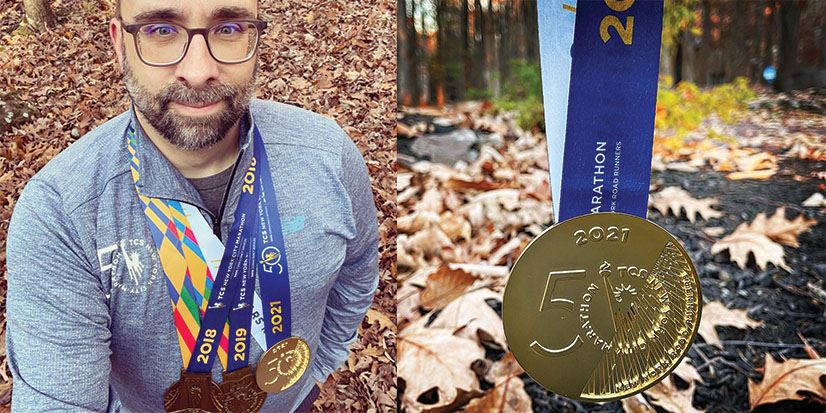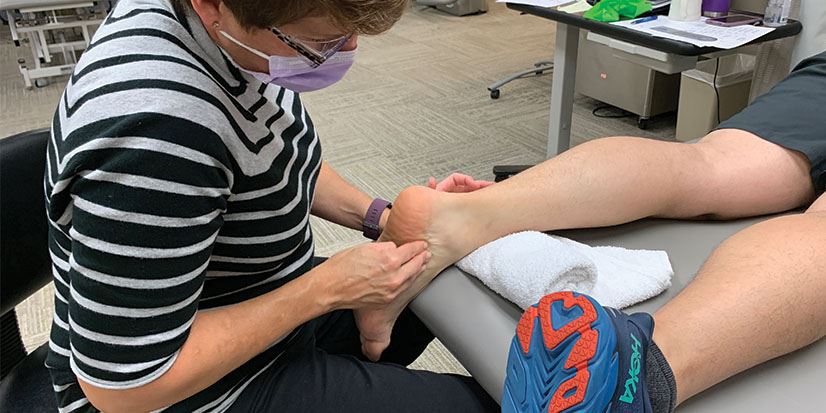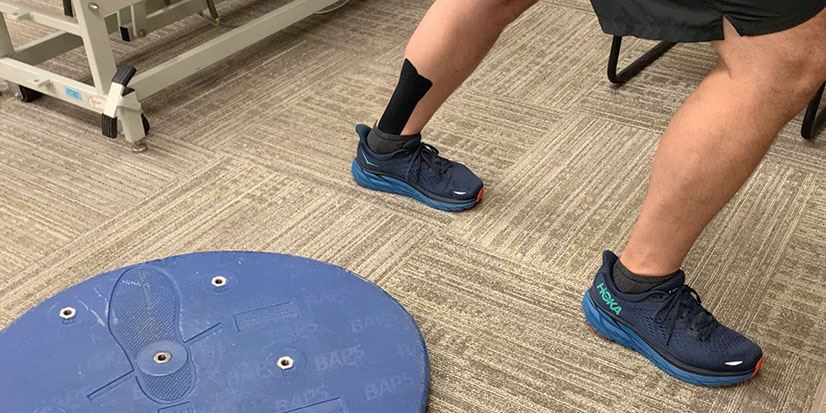Sports Medicine: Overcoming injury to run the 50th New York City Marathon
- Category: News, Injury Rehab, Sports Medicine
- Posted On:
- Written By: Allied Services Integrated Health

It’s sometimes hard for athletes who consistently push their limits, especially runners, to know when they need medical attention. After all, they are used to dealing with persistent aches and pains. No pain - no gain, right?
Experiencing a mild level of discomfort when we begin running, increasing mileage, or incorporating speed work into training, is not uncommon. So how do you know when it’s time to call for help? We sat down with marathoner Chris Steiner of Drums to talk about his recent experience.
“I jokingly call myself a seasonal runner. I do not run year-round, but I have trained for and run several marathons and many other races. And I could just tell that this time it was more than a typical strain” says Chris. “This time, the pain was different. I was having trouble bending my left ankle and pretty much any running was causing a lot of discomfort.”
Chris was experiencing the kind of pain and discomfort that told him that he had done something extraordinary during training.
“I was just about 2 months out from my next big race, the New York City Marathon. I’d increased my training miles and the pain really intensified. On top of the pain while I was running, it also started to become painful when I would walk. I knew it was time to call the professionals.”
Chris broke his left ankle when he was younger and then dislocated it several years later. His recent training had led to a flare-up of the old injury. He began working with Theresa Stook, PT, DPT a sports medicine specialist at Allied Services Spine & Sports Medicine Center in Wilkes-Barre.
"With runners, it is very common to see foot and ankle strains and injuries, whether it’s from overuse, or things like trips and falls,” notes Theresa. “In Chris’s case it was a bit of a combination - his increased training miles combined with a complicated injury history led to some inflammation"
"Chris had a history of left ankle fracture and dislocation, left ACL (anterior cruciate ligament) reconstruction - three times, and lumbar spinal surgery. All these issues cause alterations in the way you walk and in Chris’s case - run. He began experiencing pain in his ankle after he increased his training miles too rapidly following a break in his training. Once we were able to get him more comfortable in physical therapy, he got his training back on track and gradually increased his mileage to allow his injury to heal” says Theresa.
Theresa developed a personalized injury rehab program to help Chris reach his goal of being able to run the marathon with less pain.

![]()
Theresa Stook, PT, DPT, works with her patient, Chris.
"Chris wanted to be able to continue his training and complete his marathon that was just a few weeks out, so we needed to try to reduce the inflammation the best we could and build up the strength in his ankle. Because of his previous injuries and his ongoing ailment, he had been using his right side more, leaving his left side to become a bit weaker."
Chris’ injury rehab program included ultrasound technology. Therapeutic Ultrasound is often used to reduce pain, increase circulation and increase the mobility of soft tissues. The application of ultrasound can be helpful in the reduction of inflammation and the healing of injuries.
Theresa also utilized Kinesiology tape, commonly known as KT Tape or Rock Tape. This version of taping involves placing strips of this special elastic-like tape on your body in specific directions under tension to help improve your mobility and support your joints, muscles, and tendons.
“There are different theories about how kinesiology tape works. In general, it is thought that kinesiology tape helps to create balance in the neural circuitry in muscles, tendons, joints, and skin” notes Theresa. “This is thought to work to reduce pain, decrease swelling, and improve muscle performance and function. For Chris, we used it to provide support that would promote proper alignment and help calm the muscles inside his ankle."
Theresa also worked with Chris to improve his strength and flexibility. He had decreased movement from past injuries which caused him to have an altered gait.
"Regularly exercising and stretching your feet and ankles can help ensure that the muscles are providing the best support and can help ease existing pain, prevent discomfort, and reduce the risk of another injury. Even once you’re discharged from a formal physical therapy program, many foot and ankle exercises are simple and require no complicated equipment to perform” notes Theresa.

![]()
For Chris, physical therapy was a game-changer.
“I wasn’t sure if that was going to be possible - and she made it possible. Having a PT who really understood where I was coming from was very reassuring. Theresa is also a runner so she knew the kind of pain I was talking about - and how I didn’t want this injury to sideline my training when I was so close to my race. She knew exactly how to alleviate the issues and get me back on the road safely so I could run the marathon and get my medal.”
Always check with a healthcare professional before starting a new exercise and stretching routine.
Learn more about sports rehab here or call 570-348-1360 (Scranton) or 570-830-4212 (Wilkes-Barre).



